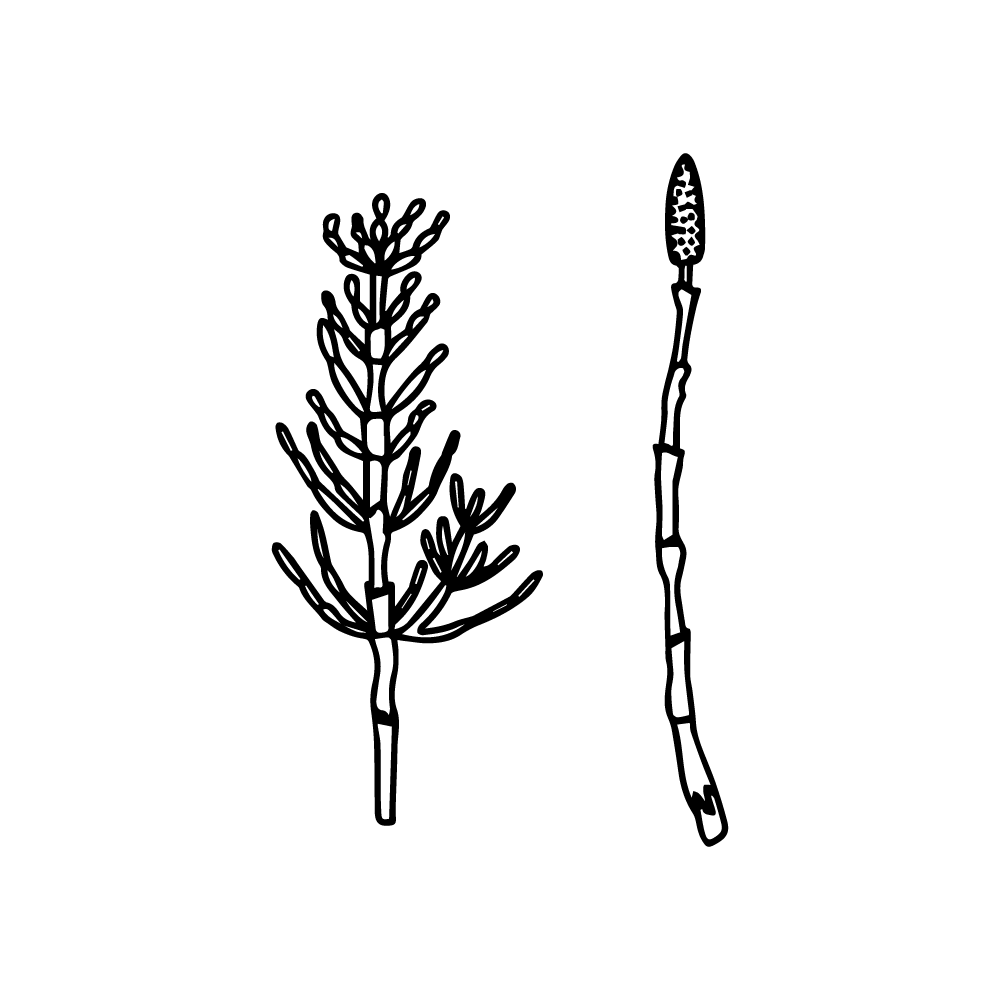Common horsetail (Equisetum arvense L.) vector
Common horsetail (Equisetum arvense L.) herb vector in PNG and SVG, transparent, no background, outline, herb vector catalog.

About Common horsetail (Equisetum arvense L.)
A spore-forming, herbaceous plant of the family Equisetaceae. Spring sporulating stems up to 20 (40) cm tall, 3-5 mm in diameter, light brown or reddish in colour, succulent, usually with five spaced funnel-shaped sheaths. The vagina has 8-12 denticles, 2-3 of which are clasped together and about the length of the vaginal tube. Sporangial penises up to 3,5 cm long; the axis of the penis is full. The vegetative stems grow later, up to 50 cm tall, 3 mm in diameter, with 6-19 longitudinal ribs. Fls 5-12 mm long, slightly protruding from the stem in the upper part; their denticles are twice as short as the tube, triangular-lanceolate, greyish, with white margins. Branches are usually four- or five-trunked (rarely six-trunked), usually erect, sometimes branched. The teeth of the sheaths are recurved, triangular, pointed. Sporulates in April-May.
Active ingredients. The herb contains 5% of the saponin equisetonin, the alkaloids equisetin, nicotine, dimethylsulfone; flavonoids: equisethrin, isoquercitrin and 5-glucosid-luteolin; 278 mg% vitamin C, 4,7 mg% carotene; malic, aconitic and oxalic acids; about 16% protein, up to 3,5% fat, tannins, bitters, resins, and up to 17% minerals, of which silicon accounts for the main part.
Preparation. The aerial part of the ground part of the groundsel (Equiseti herba) is used for medicinal purposes. Cut 5 cm from the ground (June-August) on a clear day. Dry in a well-ventilated, sun-protected room or oven at a temperature of not more than 45 °C. The dried raw material must be greyish-green in colour, with a faint smell and a sour taste. A 1 kg fresh herb yields 200-220 g dry. Stored in tightly sealed containers. Suitable for consumption up to 4 years.
Usage. The preparations of the herb stimulate urinary excretion and treat inflammations of the ureters and bladder. The tea is used to treat heart disease, rheumatism, tuberculosis, liver disease, pleurisy, to stop bleeding (uterine, haemorrhoidal nodes). It stimulates urine excretion and is therefore used to treat diseases of the ureters and bladder, including urolithiasis. The infusion of Assumption purifies the body. Used externally to treat skin diseases and persistent wounds. Used against hair loss. The young spore-bearing frogs and tubers of the rhizome are sometimes used by folk for food.
Contraindications. Fenugreek is irritating to the kidneys and should not be used in cases of nephritis. It has a strong effect on the heart and nervous system. It should be taken in small quantities and for short periods of time for therapeutic purposes.
Information source: https://en.wikipedia.org/wiki/Equisetum_arvense